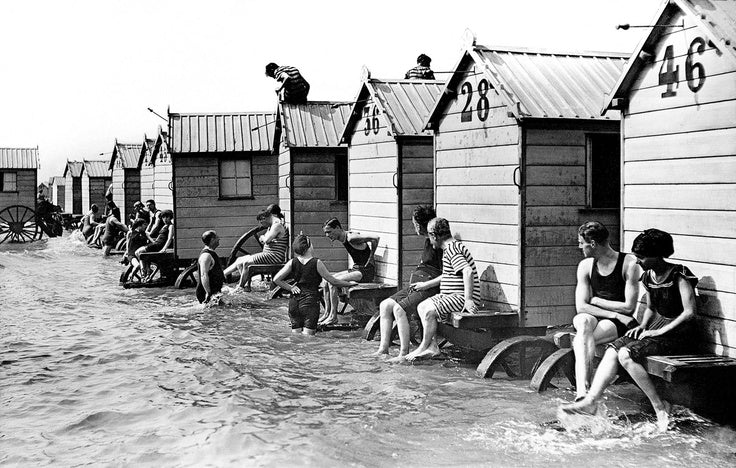Before bikinis, beach towels, and open-air sunbathing, there were bathing machines—charming, odd, and oh-so-Victorian. These curious contraptions rolled onto the sand in the 18th and 19th centuries and played a surprisingly central role in the early days of seaside culture. At Sun People Co., we love unearthing pieces of the past that reveal how our relationship with the beach has changed—and how some traditions still linger in spirit.

What Was a Bathing Machine?
Imagine a small wooden hut on wheels, often painted in nautical colours or adorned with striped canvas. These little houses were wheeled (or pulled by horses) down to the edge of the sea. Inside, you would change into your bathers in complete privacy. Then, when the machine reached the water, you would step straight into the sea.
Decency was paramount, and the idea of being spotted in anything other than full dress was scandalous. Bathing machines offered a way to enjoy the health benefits of sea bathing without compromising modesty.

Where Did They Come From?
Bathing machines first appeared on the beaches of England in the mid-1700s, with Margate and Brighton among the early adopters. The trend quickly spread across Europe and even to colonial beach destinations. Royalty, including Queen Victoria, used bathing machines, which only added to their popularity.
They were especially common at beaches where “sea bathing” was prescribed as a cure for various ailments—a dip in the ocean was believed to restore vitality and health, provided it was done with proper decorum.

The Decline of the Bathing Machine
By the early 1900s, social attitudes were shifting. Swimwear became more accepted in public, and the idea of segregated swimming faded. People wanted freedom, not formality. The bathing machine, once a staple, quietly rolled off into history.
But traces of its legacy remain. Our modern beach tents, umbrellas, and cabanas—still echo the charm and functionality of those early beachside shelters.

Why We Still Love This History
There’s something wonderfully romantic about these relics of seaside culture. They remind us that the beach has always been more than a place to swim—it’s been a stage for changing norms, personal rituals, personal style, and joyful escape. While we’re glad we can now enjoy the beach in less cumbersome ways, we admire the rich history of a simple day at the beach.
At Sun People Co., we channel a bit of that vintage spirit—honouring tradition while designing for today’s sun lovers.

